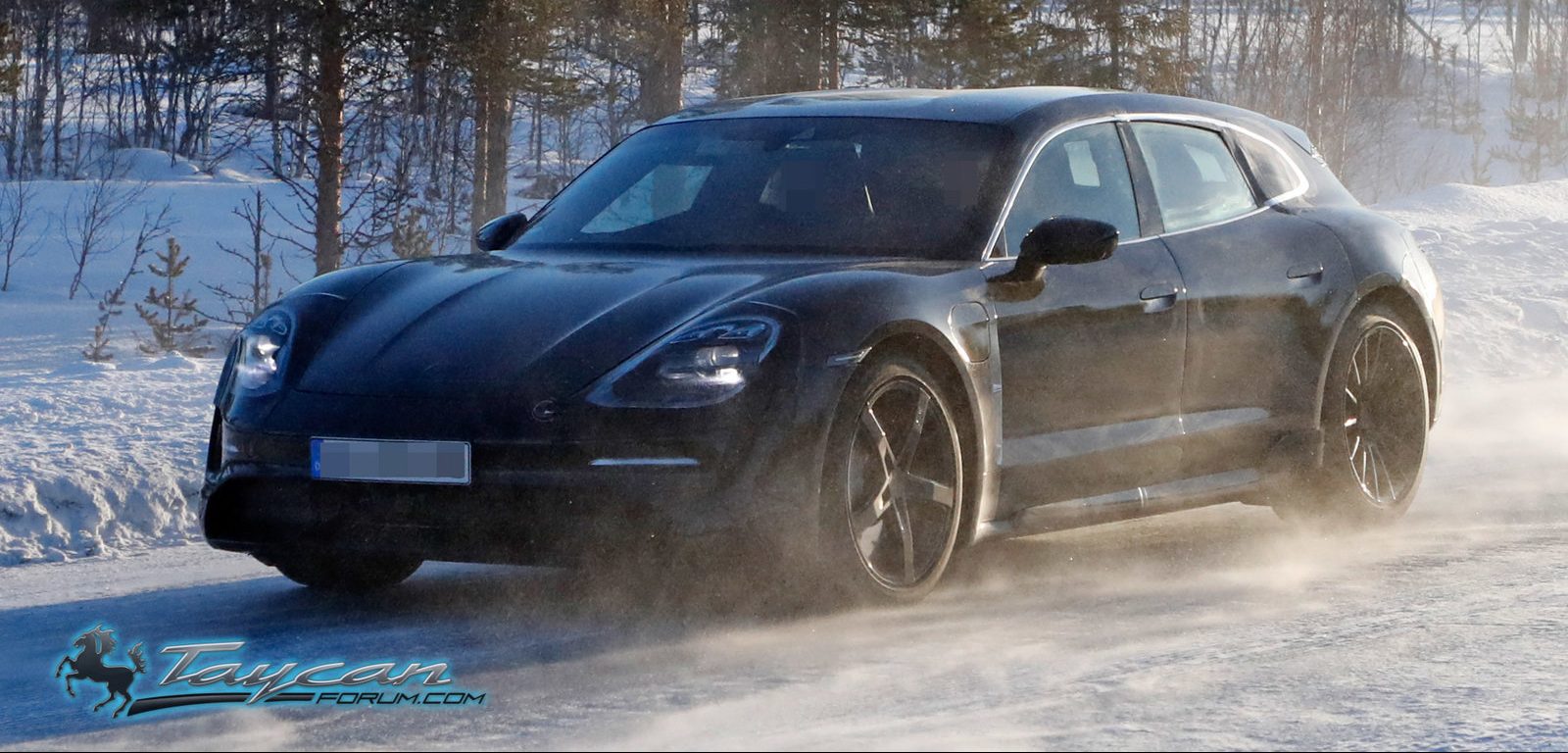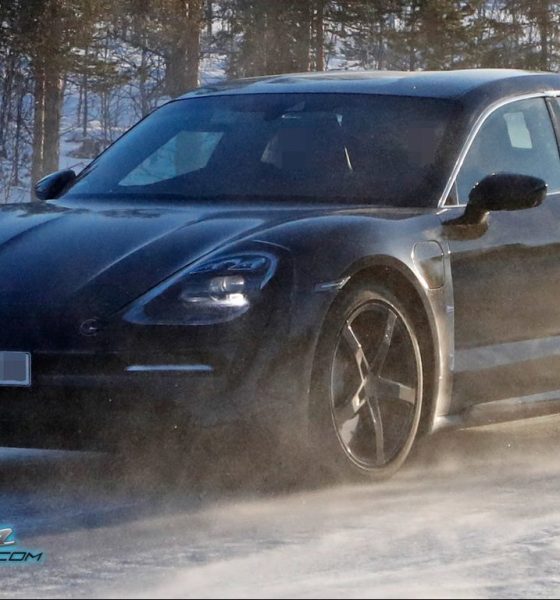

News
Porsche delays new Taycan variant to “optimize the cycle plan”
German automaker Porsche is delaying the release of its new variant for the Taycan EV because the demand for its initial model of the car is still healthy.
The Taycan Cross Turismo variant was supposed to debut in late 2020, but Porsche has decided to delay the vehicle until early 2021, according to the company’s CEO Oliver Blume. The company was transparent that this was not a cancellation of any future vehicle plans, but it was merely a revision in the timeline for which the Cross Turismo will be available for consumers.
Blume sees the delay as a positive and not a negative and refers to the strategy as optimization of Porsche’s “cycle plan.”
“The change is no disadvantage for us; we just optimized the cycle plan,” Blume said, according to Bloomberg. The company is confident about its future, mostly in part to the recovering demand Porsche has had in China. Positive sales figures in China have helped Porsche generate more earnings than any other European car company through the first half of 2020.
Porsche, which is owned by the larger Volkswagen Auto Group, is one of only three companies to remain profitable through the first half of 2020, while other carmakers suffered from decreased demand and slowing production rates due to the COVID-19 pandemic.
The other two companies to remain profitable in the first half of the year were Tesla and Toyota.
Porsche has had to navigate its way through the pandemic with strategy and calculated assessments of where to cut spending. The company eliminated “unnecessary expenses” to help conserve cashflow through the industry’s deceleration. Porsche expanded its online retail and reduced operational costs to aid dealership operations, according to the San Diego Union-Tribune.
“The company changed a lot during the coronavirus,” Blume said when talking about the adjustments Porsche made to maintain profitability. “It was important to focus on the essentials.”
The online platform proved to be a significant factor in Tesla’s ability to keep demand healthy during the virus as well. CEO Elon Musk credited the company’s online-based sales approach for maintaining substantial sales numbers.
We make the buying experience very easy. You can buy a Tesla in just two minutes by going to our website. Go onto our website. You can literally order a Tesla in two minutes, maybe one minute if you’re really fast,” Musk said in an interview with Automotive News. “I guess people are less inclined to want to go to a dealership, do the test drive, and hang out in the lobby and that kind of thing.”
As for Porsche’s future, the company expects that half of its global deliveries to be wholly or partly electric in 2025. Pure BEVs should make up for 40% of the sales, while hybrids will account for 10%, Blume said.
But the CEO made it clear, “the future belongs to electric mobility,” he said on Wednesday.

Elon Musk
Starlink achieves major milestones in 2025 progress report
Starlink wrapped up 2025 with impressive growth, adding more than 4.6 million new active customers and expanding service to 35 additional countries, territories, and markets.

Starlink wrapped up 2025 with impressive growth, adding more than 4.6 million new active customers and expanding service to 35 additional countries, territories, and markets. The company also completed deployment of its first-generation Direct to Cell constellation, launching over 650 satellites in just 18 months to enable cellular connectivity.
SpaceX highlighted Starlink’s impressive 2025 progress in an extensive report.
Key achievements from Starlink’s 2025 Progress
Starlink connected over 4.6 million new customers with high-speed internet while bringing service to 35 more regions worldwide in 2025. Starlink is now connecting 9.2 million people worldwide. The service achieved this just weeks after hitting its 8 million customer milestone.
Starlink is now available in 155 markets, including areas that are unreachable by traditional ISPs. As per SpaceX, Starlink has also provided over 21 million airline passengers and 20 million cruise passengers with reliable high-speed internet connectivity during their travels.
Starlink Direct to Cell
Starlink’s Direct to Cell constellation, more than 650 satellites strong, has already connected over 12 million people at least once, marking a breakthrough in global mobile coverage.
Starlink Direct to Cell is currently rolled out to 22 countries and 6 continents, with over 6 million monthly customers. Starlink Direct to Cell also has 27 MNO partners to date.
“This year, SpaceX completed deployment of the first generation of the Starlink Direct to Cell constellation, with more than 650 satellites launched to low-Earth orbit in just 18 months. Starlink Direct to Cell has connected more than 12 million people, and counting, at least once, providing life-saving connectivity when people need it most,” SpaceX wrote.
News
Tesla Giga Nevada celebrates production of 6 millionth drive unit
To celebrate the milestone, the Giga Nevada team gathered for a celebratory group photo.

Tesla’s Giga Nevada has reached an impressive milestone, producing its 6 millionth drive unit as 2925 came to a close.
To celebrate the milestone, the Giga Nevada team gathered for a celebratory group photo.
6 million drive units
The achievement was shared by the official Tesla Manufacturing account on social media platform X. “Congratulations to the Giga Nevada team for producing their 6 millionth Drive Unit!” Tesla wrote.
The photo showed numerous factory workers assembled on the production floor, proudly holding golden balloons that spelled out “6000000″ in front of drive unit assembly stations. Elon Musk gave credit to the Giga Nevada team, writing, “Congrats on 6M drive units!” in a post on X.
Giga Nevada’s essential role
Giga Nevada produces drive units, battery packs, and energy products. The facility has been a cornerstone of Tesla’s scaling since opening, and it was the crucial facility that ultimately enabled Tesla to ramp the Model 3 and Model Y. Even today, it serves as Tesla’s core hub for battery and drivetrain components for vehicles that are produced in the United States.
Giga Nevada is expected to support Tesla’s ambitious 2026 targets, including the launch of vehicles like the Tesla Semi and the Cybercab. Tesla will have a very busy 2026, and based on Giga Nevada’s activities so far, it appears that the facility will be equally busy as well.
News
Tesla Supercharger network delivers record 6.7 TWh in 2025
The network now exceeds 75,000 stalls globally, and it supports even non-Tesla vehicles across several key markets.

Tesla’s Supercharger Network had its biggest year ever in 2025, delivering a record 6.7 TWh of electricity to vehicles worldwide.
To celebrate its busy year, the official @TeslaCharging account shared an infographic showing the Supercharger Network’s growth from near-zero in 2012 to this year’s impressive milestone.
Record 6.7 TWh delivered in 2025
The bar chart shows steady Supercharger energy delivery increases since 2012. Based on the graphic, the Supercharger Network started small in the mid-2010s and accelerated sharply after 2019, when the Model 3 was going mainstream.
Each year from 2020 onward showed significantly more energy delivery, with 2025’s four quarters combining for the highest total yet at 6.7 TWh.
This energy powered millions of charging sessions across Tesla’s growing fleet of vehicles worldwide. The network now exceeds 75,000 stalls globally, and it supports even non-Tesla vehicles across several key markets. This makes the Supercharger Network loved not just by Tesla owners but EV drivers as a whole.
Resilience after Supercharger team changes
2025’s record energy delivery comes despite earlier 2024 layoffs on the Supercharger team, which sparked concerns about the system’s expansion pace. Max de Zegher, Tesla Director of Charging North America, also highlighted that “Outside China, Superchargers delivered more energy than all other fast chargers combined.”
Longtime Tesla owner and FSD tester Whole Mars Catalog noted the achievement as proof of continued momentum post-layoffs. At the time of the Supercharger team’s layoffs in 2024, numerous critics were claiming that Elon Musk was halting the network’s expansion altogether, and that the team only remained because the adults in the room convinced the juvenile CEO to relent.
Such a scenario, at least based on the graphic posted by the Tesla Charging team on X, seems highly implausible.








